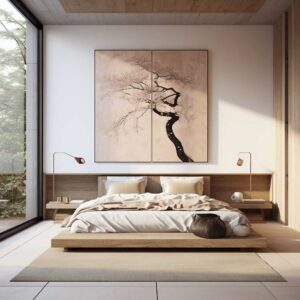Delve into the world of Japanese bedroom interiors where simplicity meets serenity. This article explores the transformative power of Japanese design principles, bringing a sense of tranquility and balance to your personal space. Discover how traditional elements can blend seamlessly with modern aesthetics to create a bedroom that’s not just a place to sleep, but a serene escape from the hustle and bustle of everyday life.
Soothing Japanese Bedroom Harmony with Natural Elements
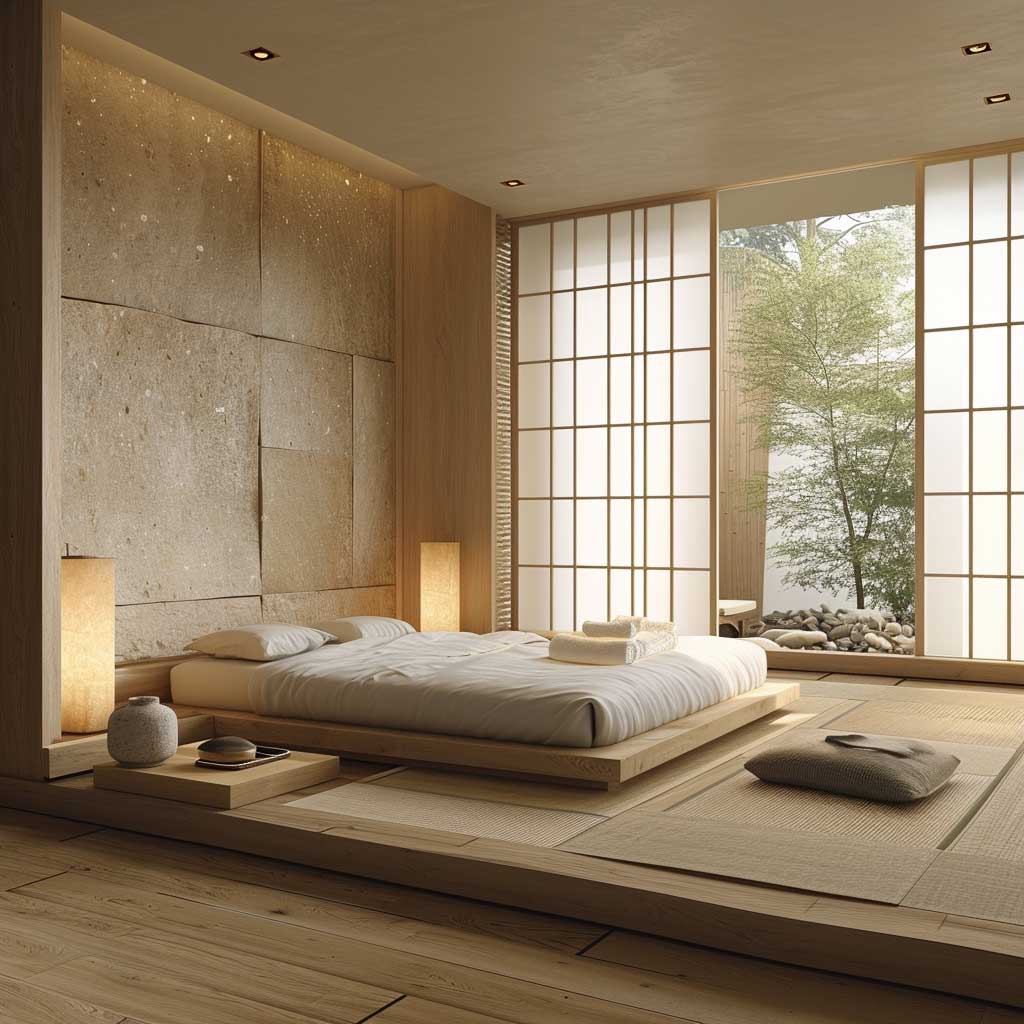
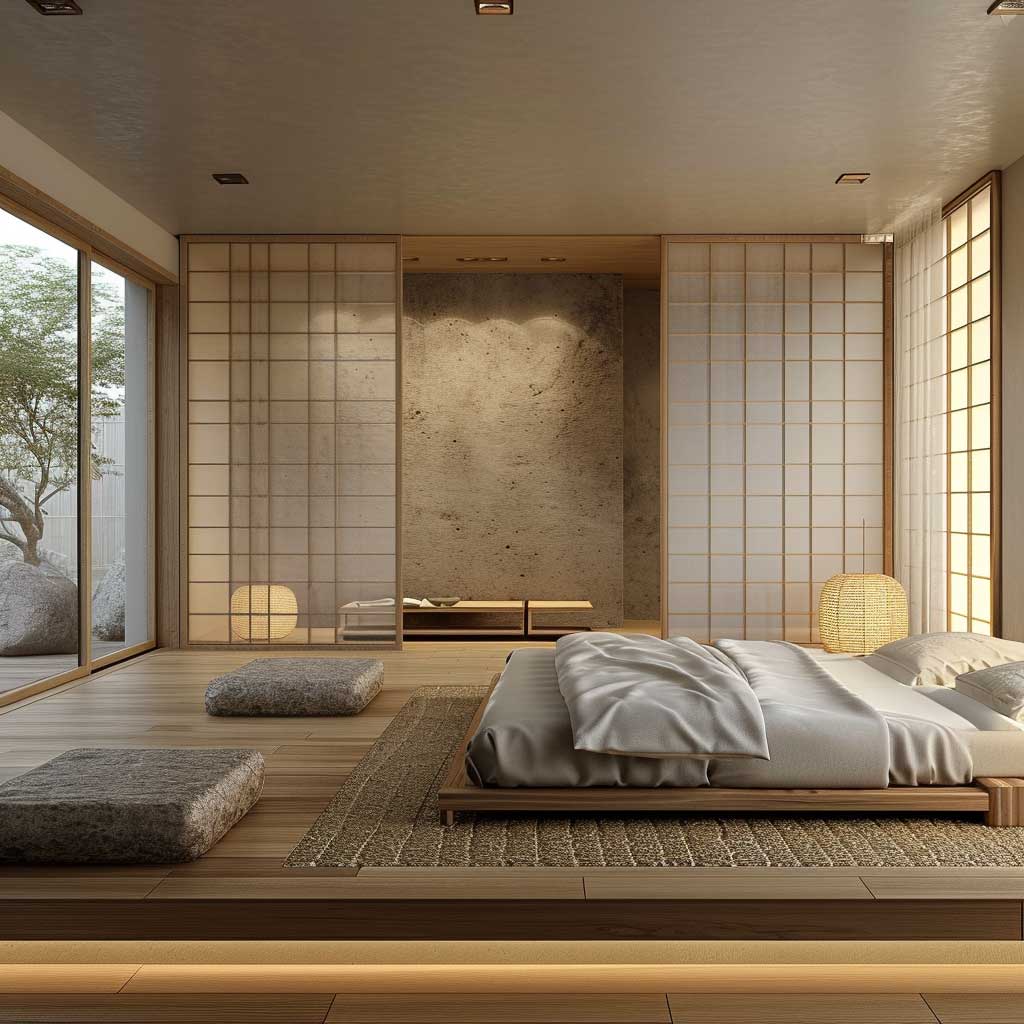


The realm of interior design often draws inspiration from various cultures, and Japanese interior design, especially for bedrooms, stands out for its unique blend of simplicity, natural beauty, and tranquility. This approach to bedroom design is not just about creating a visually pleasing space, but also about crafting an environment that promotes peace and harmony.
At the heart of a Japanese-themed bedroom is the principle of bringing nature indoors. This is achieved through the incorporation of natural materials like wood and stone. Wood, with its warm and inviting hues, forms the backbone of many Japanese designs. In a bedroom, wooden elements might be introduced through flooring, furniture, or even as part of the room’s structural elements. The natural grain of the wood, its texture, and color palette create a sense of calm and grounding, vital for a space meant for relaxation and rejuvenation.
Stone, another natural element frequently used in Japanese design, adds a different dimension to the bedroom space. It can be used in various forms – from stone walls to decorative elements like a small indoor water feature or stone sculptures. These elements bring in the serene qualities often found in Japanese gardens, creating a tranquil atmosphere that encourages relaxation and contemplation.
The layout and design of a Japanese bedroom are often minimalist. This minimalism is not about austerity, but rather about creating space and avoiding clutter. Every element in the room is chosen with care and purpose, ensuring that nothing distracts from the room’s serene atmosphere. Furniture is often low to the ground, following traditional Japanese styles. The use of a low bed or even a futon on a tatami mat floor is common, enhancing the connection to the earth and nature.

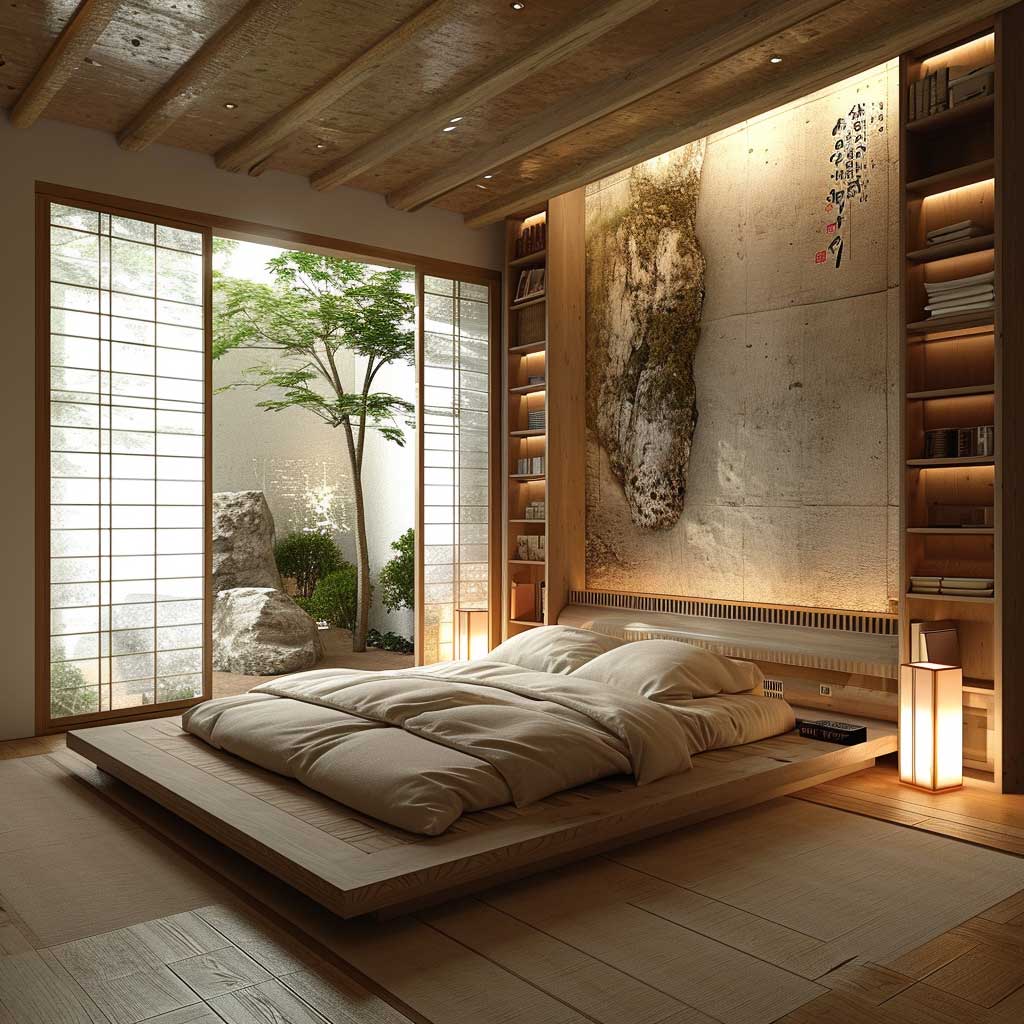

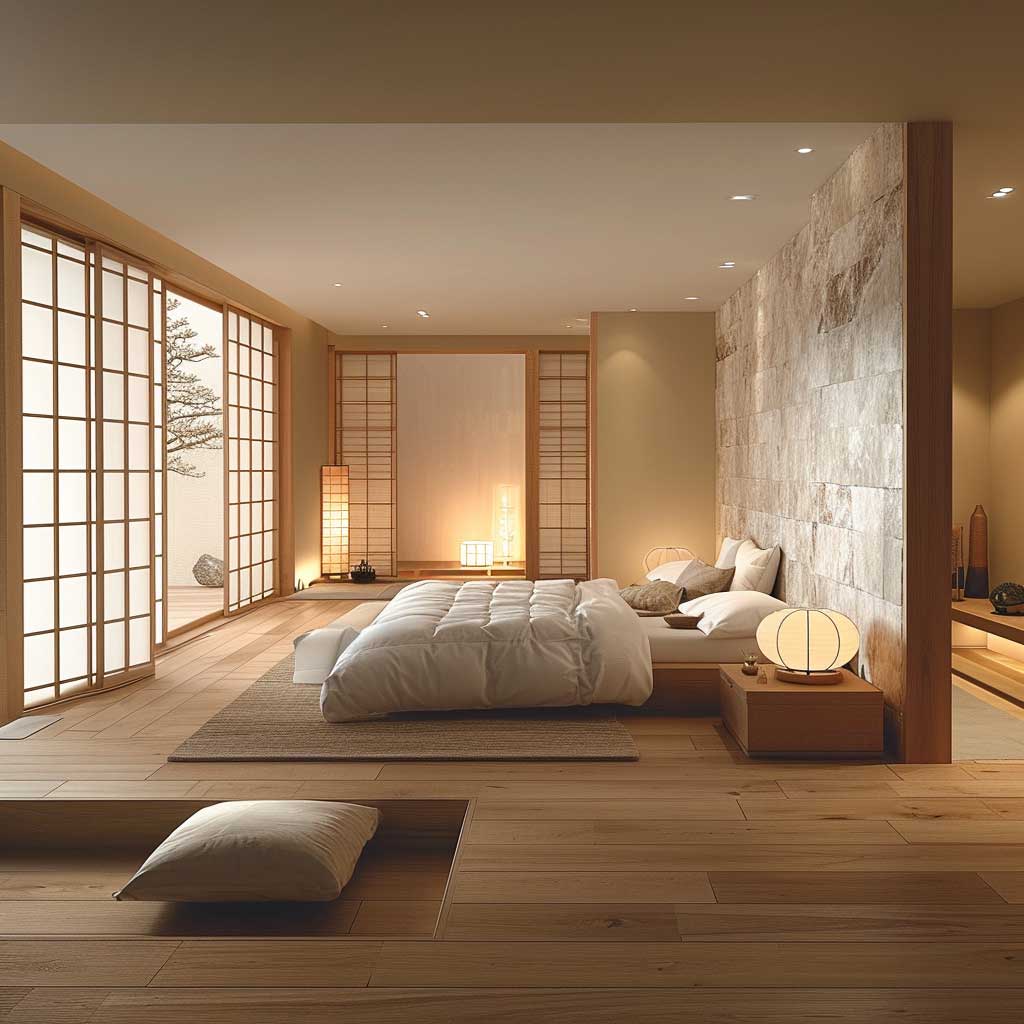
Light plays a crucial role in creating the right ambiance in a Japanese-style bedroom. Natural light is maximized to enhance the connection with the outdoors. When it comes to artificial lighting, the approach is subtle and understated. Soft, diffused lighting helps to create a calm and relaxing environment, ideal for unwinding after a long day.
In terms of color, the Japanese bedroom palette is typically muted and inspired by nature. Soft earth tones, beiges, greens, and grays are common choices. These colors are not only soothing to the eyes but also help to create a cohesive look that complements the natural materials used in the room.
Decorative elements in a Japanese bedroom are carefully selected to maintain harmony and balance. Instead of abundant decorations, a few well-chosen pieces such as a simple vase, a piece of traditional Japanese art, or a small bonsai tree can be used. These elements not only add to the aesthetic appeal of the room but also serve as a focal point for meditation and reflection.
In conclusion, creating a Japanese-inspired bedroom is about more than just aesthetics; it’s about embracing a philosophy that values harmony, simplicity, and connection to nature. By incorporating natural elements like wood and stone, embracing minimalism, and paying attention to lighting and color, one can create a bedroom that is not just a place to sleep, but a tranquil haven for rest and rejuvenation.
Elegant Fusion of Modern and Traditional Japanese Bedroom Design

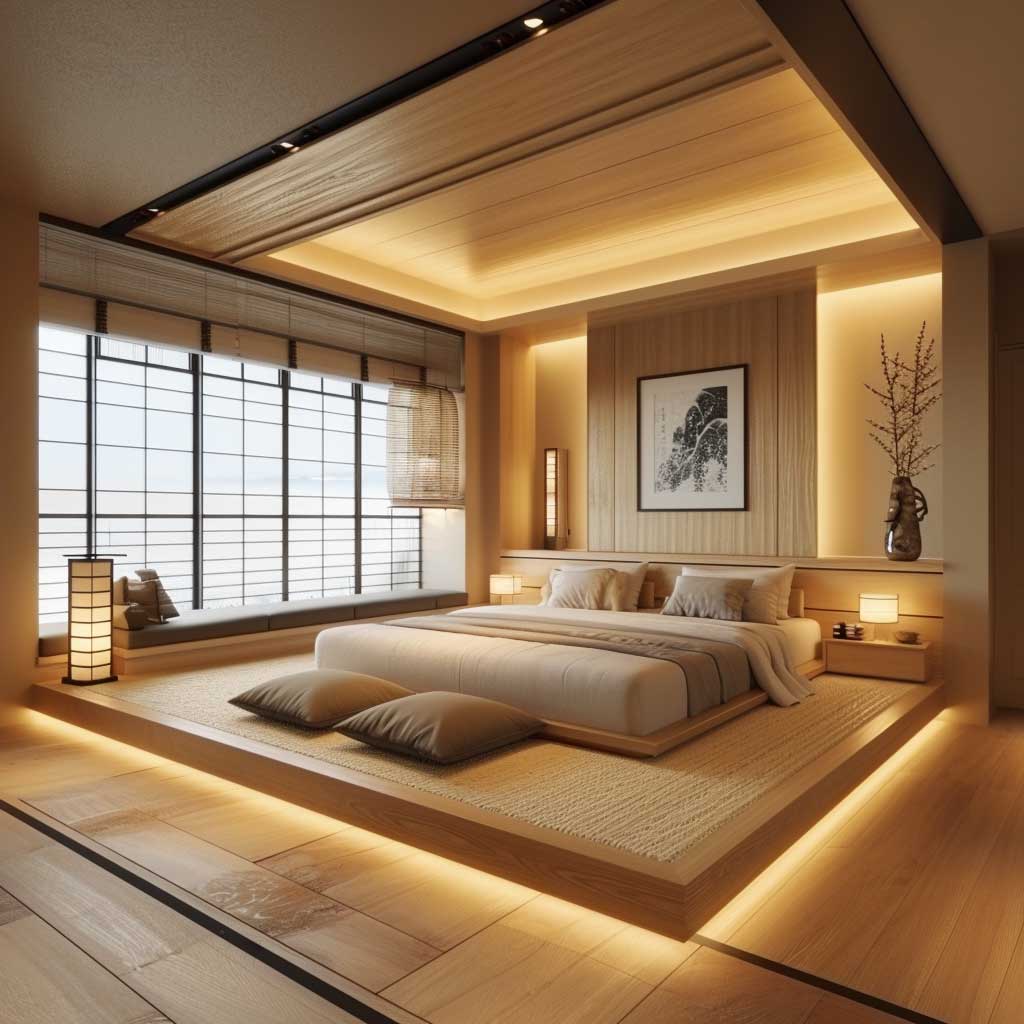


The fusion of modern and traditional elements in Japanese interior design, particularly in bedrooms, offers a unique aesthetic that is both timeless and contemporary. This blending of styles is not just a trend but a reflection of the evolving nature of design, where respect for tradition meets the demands of modern living.
In a Japanese bedroom that marries traditional and modern design elements, one can expect to see a harmonious balance between the old and the new. This balance is achieved by integrating classic Japanese design features with modern conveniences and styles.
Traditional Japanese design is characterized by its minimalism, clean lines, and an emphasis on functionality. In the bedroom, this might be represented through the use of tatami mats, shoji screens, or fusuma (sliding panels). These elements not only add a touch of traditional Japanese aesthetics but also serve practical purposes. Tatami mats, for instance, are not just floor coverings; they are integral to the traditional Japanese lifestyle, influencing the layout and function of the room.
To infuse modernity into the space, contemporary furniture and technology are seamlessly integrated. This could be in the form of a sleek, modern bed frame that contrasts yet complements the tatami flooring, or state-of-the-art lighting and sound systems that are discreetly incorporated into the room, ensuring that the space meets the needs of today’s lifestyle.
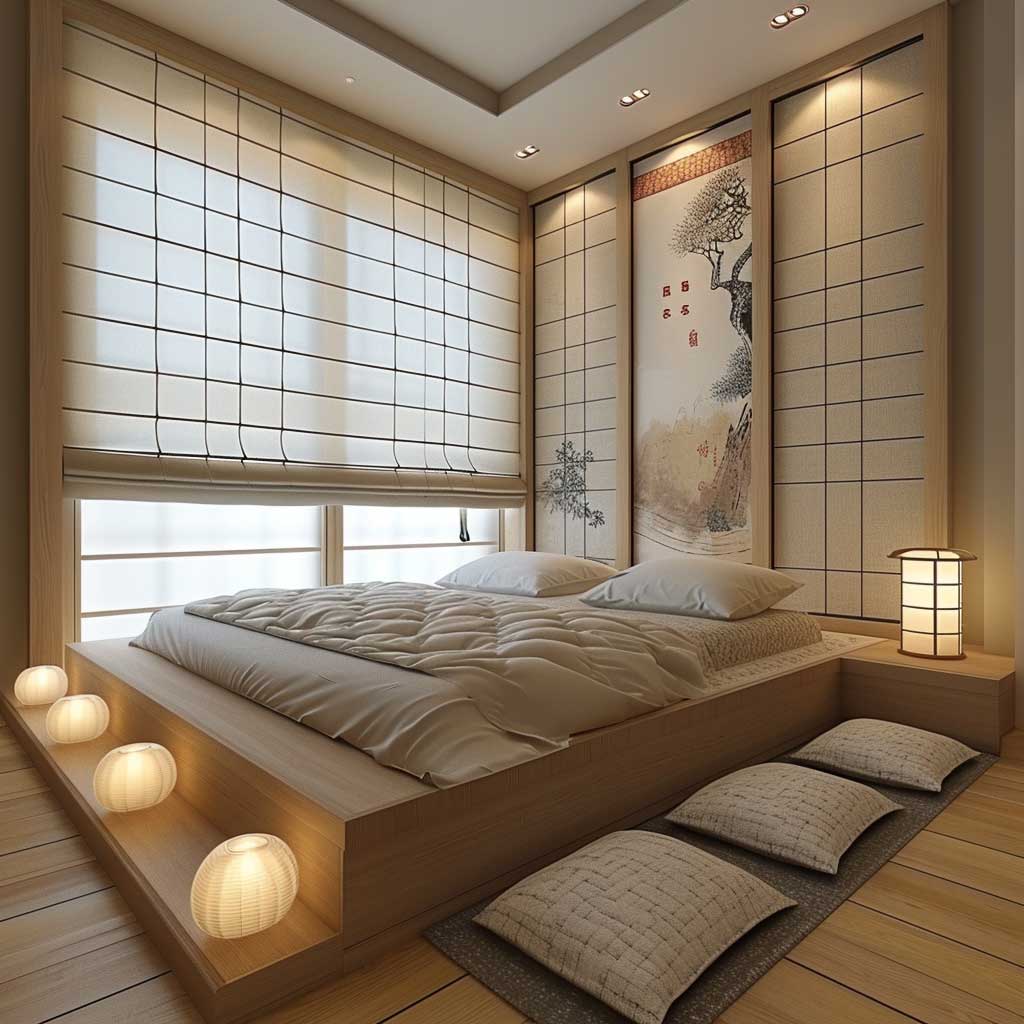
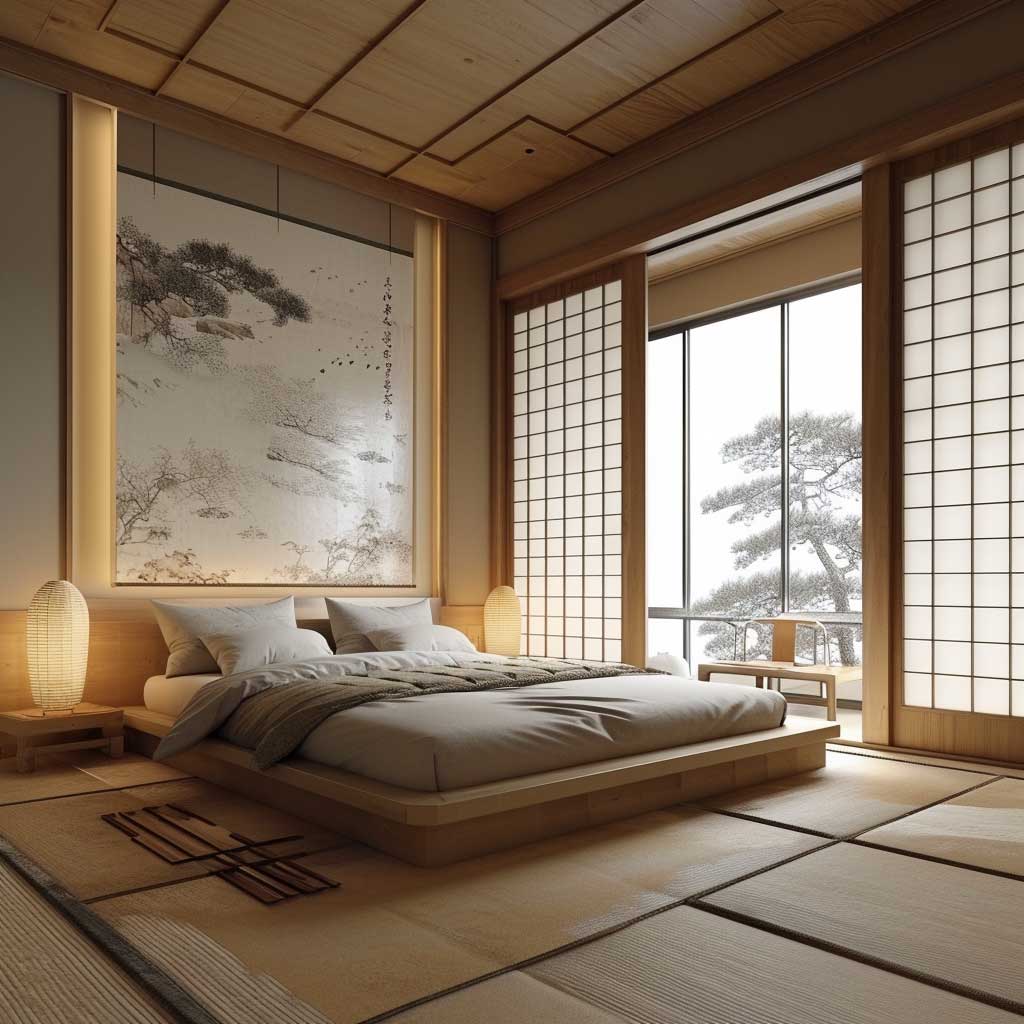
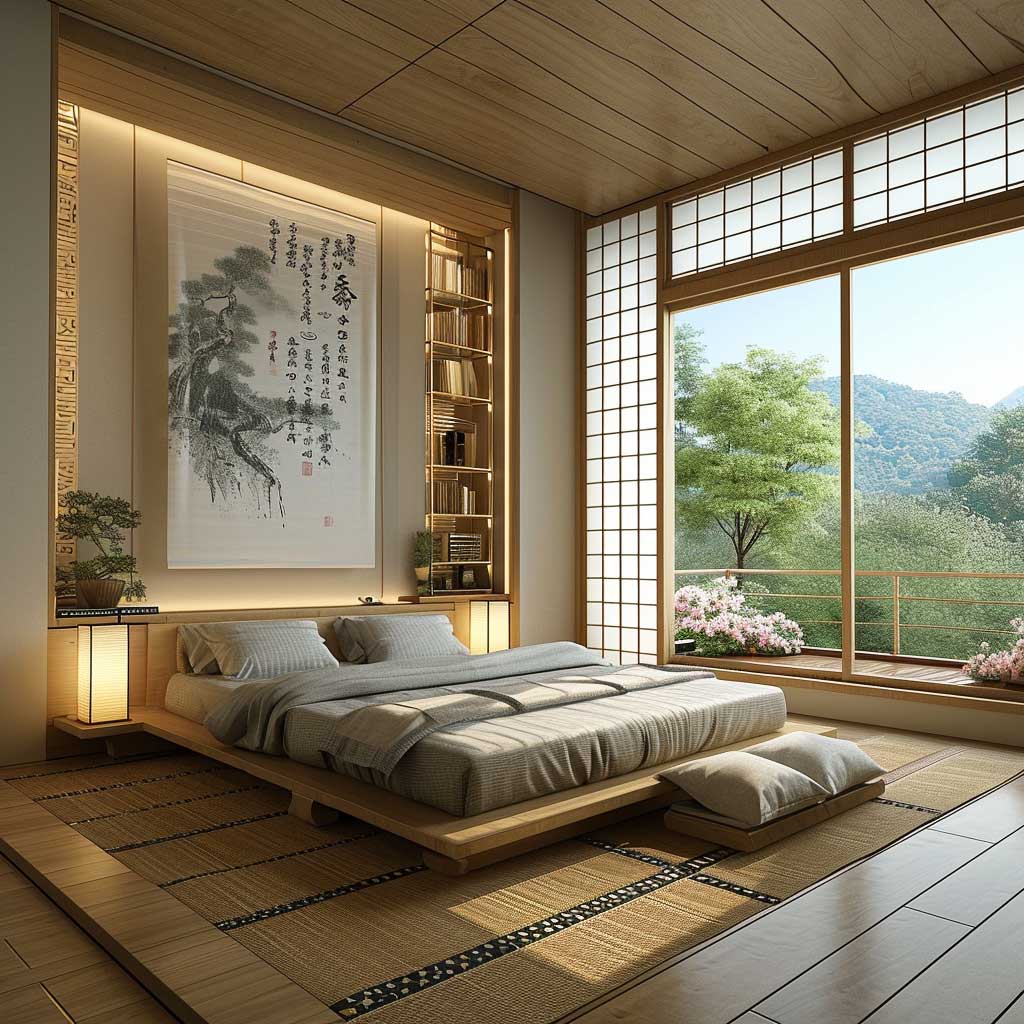
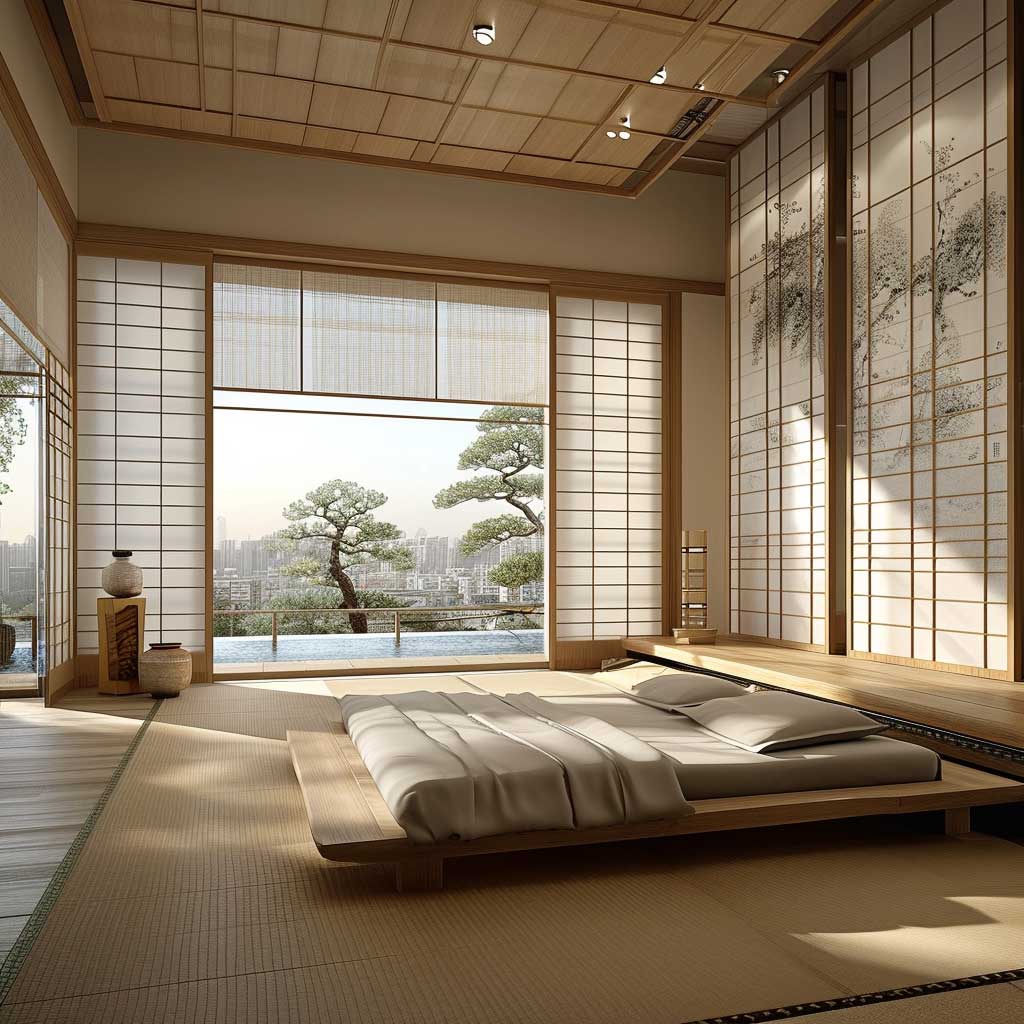
The color palette in such a bedroom is a thoughtful mix of traditional and modern hues. While the room might predominantly feature neutral tones typical of Japanese design, there could be pops of brighter colors or modern textures introduced through accents like cushions, rugs, or artwork. This not only adds visual interest but also personalizes the space, making it more in tune with contemporary tastes.
One of the most striking aspects of this design approach is the way it handles space. Japanese design principles often emphasize the concept of ma – the thoughtful use of space, or the space between things. In a modern-traditional fusion bedroom, this concept is embraced through the strategic placement of furniture and the careful consideration of how each item occupies the room. The result is a space that feels open and airy yet intimate and cozy.
In addition, modern amenities are carefully chosen and placed to ensure they don’t overpower the traditional aesthetic. For instance, a flat-screen TV or a sound system in the bedroom would be positioned in a way that it blends with the overall design, perhaps hidden when not in use or incorporated into a piece of multi-functional furniture.
In conclusion, the fusion of modern and traditional elements in a Japanese bedroom creates a space that is both rooted in heritage and forward-looking. It’s a testament to the versatility and timelessness of Japanese design, demonstrating how it can adapt to contemporary needs while still maintaining its core principles of simplicity, natural beauty, and harmony.
Zen Inspired Japanese Bedroom with Subtle Lighting and Soft Textures




The concept of Zen in interior design, especially in the context of a Japanese bedroom, transcends mere aesthetics to evoke a sense of peace, balance, and simplicity. This Zen-inspired approach to bedroom design is particularly effective in creating a space that not only serves its functional purpose but also acts as a sanctuary for relaxation and introspection.
In a Zen-inspired Japanese bedroom, the emphasis is on creating an atmosphere of tranquility and calm. This is achieved through the careful selection and placement of each element in the room, from the furniture and lighting to the textures and color palette.
Subtle lighting is a crucial component of Zen design. It’s not just about illuminating a space; it’s about creating a mood. In a Japanese bedroom, lighting should be soft and diffused, avoiding harsh overhead lights. Lamps with paper shades are often used as they give off a gentle, ambient glow that is soothing and comforting. The use of candles or dimmable LED lights can also contribute to a peaceful atmosphere, allowing for the adjustment of light levels to suit different moods and times of the day.
Soft textures play an equally important role in creating a Zen-inspired bedroom. These can be introduced through various elements such as bedding, curtains, and rugs. The textures chosen should invite comfort and relaxation. For instance, natural fabrics like cotton and linen for bed linens and window treatments can enhance the room’s calming feel. The use of tatami mats on the floor is another traditional Japanese element that adds both texture and a sense of authenticity to the design.
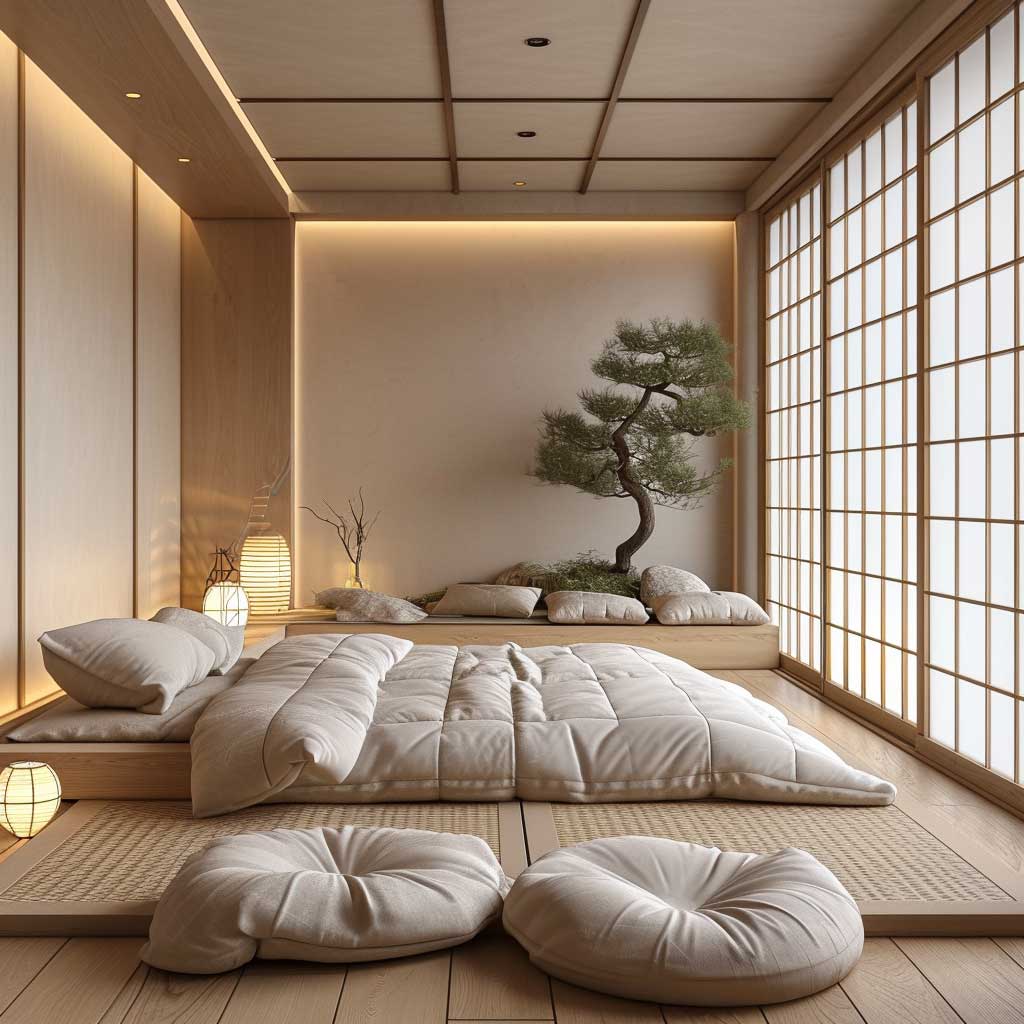
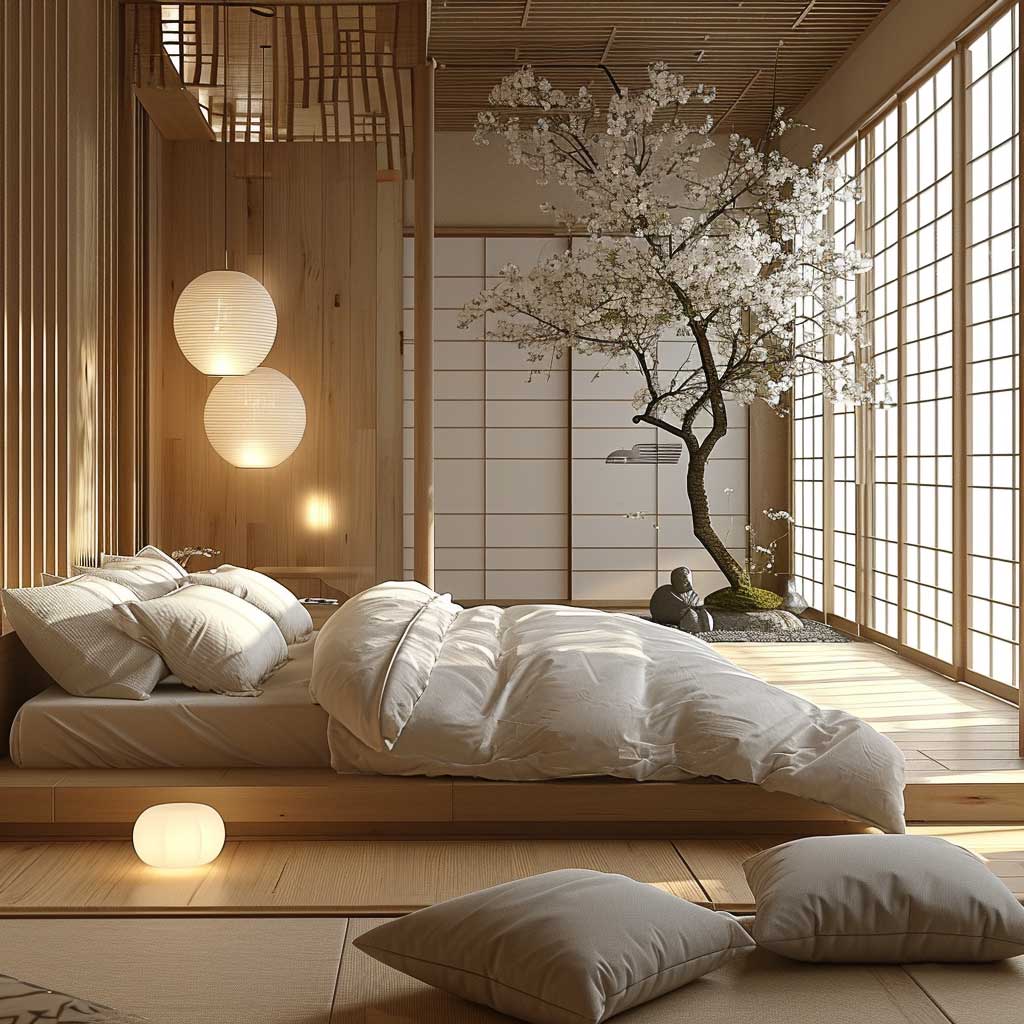


The color palette in a Zen bedroom is typically muted and inspired by nature. Soft earth tones such as beiges, browns, greens, and grays are preferred as they help to create a serene and grounded environment. These colors are not only pleasing to the eye but also promote a sense of calm and relaxation, which is essential in a bedroom.
Minimalism is a key principle in Zen design, and this is reflected in the way the bedroom is furnished and decorated. The idea is to keep the space uncluttered and simplistic, with every item having a purpose and place. Furniture is chosen for its functionality and simplicity, with clean lines and a lack of ornate details. Decorations are kept to a minimum, with perhaps a single piece of artwork or a small indoor plant like a bonsai or bamboo to add a living element without overwhelming the space.
One of the unique aspects of Zen design is the incorporation of natural elements, which help to bring the outdoors inside. This connection to nature can be achieved through the use of plants, water features, or even a simple rock garden. These elements not only add beauty to the room but also contribute to the overall sense of harmony and balance.
In conclusion, a Zen-inspired Japanese bedroom is a thoughtful blend of simplicity, natural elements, and mindful design. By focusing on subtle lighting, soft textures, a natural color palette, and minimalist principles, such a space becomes more than just a room; it becomes a haven for relaxation and reflection, embodying the true essence of Zen philosophy.
In summary, Japanese interior design in bedrooms is more than just a style; it’s a philosophy that promotes peace, harmony, and balance. By incorporating elements from traditional Japanese culture and fusing them with modern design concepts, one can transform their bedroom into a restful sanctuary. This approach to design not only beautifies the space but also enriches the soul, offering a serene escape in the comfort of your home.



